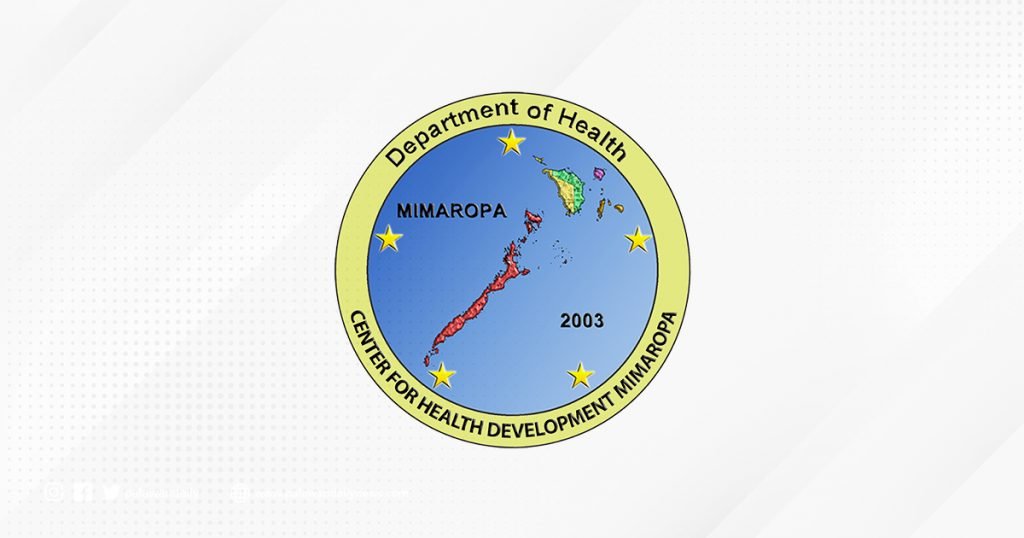Amid the reemerging incidence of the COVID-19 cases, CHD-MIMAROPA Medical Officer III, Dr. Christy Andaya, said that the public should also remain cautious and informed about the other existing infectious diseases as the Hand, Foot, and Mouth disease, aside from what we are facing today.
“Hindi na rin naman ito bago dahil dati na rin naman tayong nagkakaroon ng ganitong kaso. Ito nga po ay maaaring natahimik o natabunan ng kaunti dahil noong tayo’y abalang-abala sa COVID. Ngunit ngayon po, kailangan nating magbigay ng paalala na ito pong mga kasong ito [infectious diseases] ay nangyayari sa ating kapaligiran kaya kailangan pa rin ng ibayong pag-iingat,” Dr. Andaya said in a virtual press conference held today, Monday, May 23,
From the data gathered from March 22 to May 14 from the Center for Regional Epidemiology and Technology Enhancement, 417 cases of hand, foot, and mouth disease (HFMD) have been detected in the province. The average age group consists of 2-day-old infants up to individuals aged 31 years old, and about 58.62% were males.
“Ang kanilang mga usual na nakitang sintomas ay lagnat, mayroon pong rashes, pananakit ng katawan, sore throat, pananakit, pamamaos ng lalamunan. Ito pong ulcer na ito ay sugat na malalim sa balat na nagtubig. Nahihilo, nagsusuka, at tsaka nagtatae,” said by the CHD-MIMAROPA Medical Officer III, describing the signs and symptoms of people who have acquired HFMD.
Causes
The Hand, Foot, and Mouth Disease (HFMD) is primarily caused by a virus closely related to Enterovirus, or such RNA viruses that commonly cause infections in infants and children that is typically benign or curable.
“Kumakalat po ito kapag yung may hand, foot, mouth disease na bata o yung adult e nakahawa po dahil siya ay umubo o kaya ay na-hatching, yun pong kanyang laway ay tumalsik sa ibang tao, maaari rin po kasi na yung kontaminadong bagay ay nahawakan o meron na pong pumutok na blister–yung mga secretion, nandun po sa gamit,” said Dr. Andaya.
Complications
Although rare, Dr. Andaya said that such HFMD might potentially lead to a severe case of myocarditis or a rare cardiovascular disease that involves the inflammation of the middle layer of the heart.
She discussed four stages classifying the severity of the HFMD enterovirus:
Stage 1: Oral ulcers and vesicular rash
Stage 2: Central Nervous System (CNS) or the infection leading to the brain, causing poliomyelitis-like or inflicted paralysis
Stage 3: Cardiopulmonary failure or a range of serious disorders that affect the heart and lungs, such as pulmonary edema and hemorrhage
Stage 4: Convalescence or patient recovery
“Kadalasan naman ay mild lang [ang cases] nitong sa hand, foot, and mouth disease… Symptomatic management po ng ating lagnat, hydration, at pahinga para lumakas po ang ating immune system, malabanan po natin ang virus,” she explained.
“Kailangan po ng gamot para sa lagnat, kailangan pong uminom nang maraming tubig, o mag-hydrate gamit orisol o hydrite. Kung sakali naman po ang nahawa na virus ay hindi agad gumagaling–nagprogress na tuloy-tuloy ang panghihina, o parang nahihirapang gumalaw, at ito po ay severe case, kailangan po nating dalhin [na] sa ospital ang pasyente,” the doctor explained further.
Prevention
“Unang-una, kapag may sintomas, tayo ay magpatingin. Ngayon po, masasabi natin dun sa naranasan nating pandemya, na-establish na po yung ating mga paraan para sa tele-consult. Kailangan pong tayo ay magpunta sa ating mga pinakamalapit na center para kumunsulta sa nakita o naramdaman na sintomas dun sa lagnat, sumakit ang katawan,” she said.
She also reiterated that if a certain child shows symptoms of the disease, they should be guided for isolation, as the disease has the capability to spread faster and infect others.
Throughout the course of the detection of cases, the CHD-MIMAROPA has been keeping in touch with the clinical management of the cases, as well as the testing for the collated specimen of the infected individuals, continuous surveillance of affected areas, coordination, and dissemination of programs that will impart more awareness regarding the rise of such infectious diseases.
“Tuloy-tuloy po ang pag-iimbestiga ng ating CREATE, atin pong surveillance officers dito po sa ganitong kaso ng sakit, reporting, di sila tumitigil. Lahat po kami nag-uusap sa mga nangyayari at mga susunod pong hakbang,” the medical officer further said.
